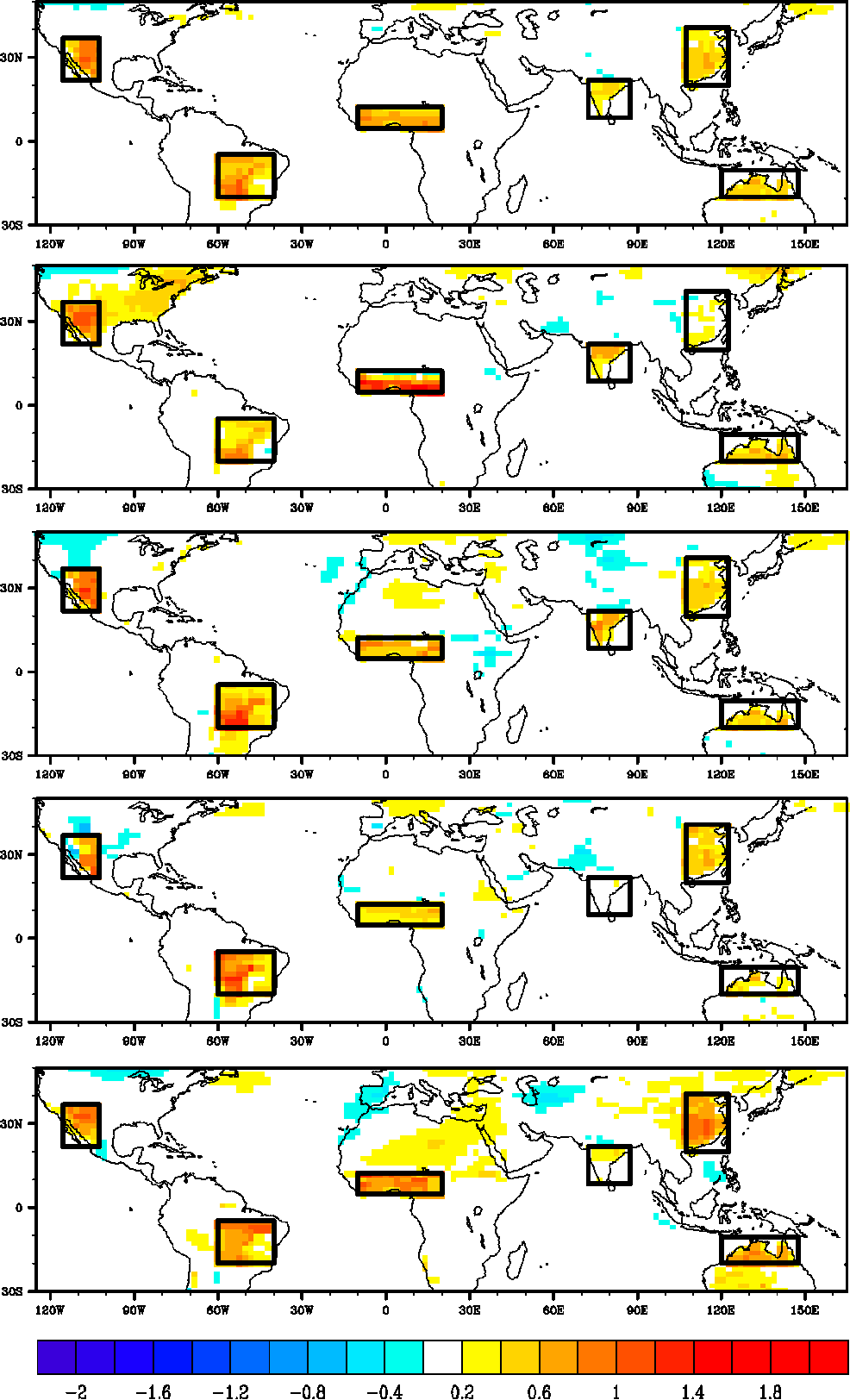
 |
||||
| |
||||
Vegetation Feedbacks over the Global Monsoon RegionsCollaborators: Zhengyu Liu, Robert Gallimore, Sam Levis, Dave Gutzler, Karl-Heinz Wyrwoll, Di Ma, Guangshan Chen Funding: NOAA CPPA, DOE NICCR Publications: Ma, D., Z. Liu, S. Lu, M. Notaro, X. Rong, G. Cheng, and F. Wang, 2013: Short-term climatic impacts of Wyrwoll, K.H., F. McRobie, M. Notaro, and G. Chen, 2013: Indigenous vegetation burning practices and their Notaro, M., and D. Gutzler, 2012: Simulated impact of vegetation on climate across the North American monsoon Wyrwoll, K.-H., M. Notaro, and G. Chen, 2012: A burning question. Australasian Science, July/August 2012, 23- Ma, D., M. Notaro, Z. Liu, G. Chen, Y. Liu, and S. Lu, 2012: Simulated impacts of afforestation in East China Chen, G.-S., M. Notaro, Z. Liu, and Y. Liu, 2012: Simulated local and remote biophysical effects of afforestation Notaro, M., G. Chen, and Z. Liu, 2011: Vegetation feedbacks to climate in the global monsoon regions. Journal of Notaro, M., K-H. Wyrwoll, and G. Chen, 2011: Did aboriginal vegetation burning impact on the Australian summer Methods: Vegetation feedbacks on the North American monsoon are explored using NCAR CCSM3.5 fully coupled climate model and compared with those simulated over the other global monsoon regions. Through initial value ensemble experiments, the total vegetation cover is reduced in 60 ensemble members and the climatic response analyzed. Key finding: A reduction in vegetation cover over the global monsoon regions results in an increase in surface air temperature and reduction in evaporation and precipitation. The feedback mechanisms are not the same for each monsoon region. |
||
 |
Response of surface temperature (°C) [annually, JFM, AMJ, JAS, and OND from top to bottom] due to a 0.2 reduction in vegetation cover fraction over the global monsoon regions, based on 60 ensemble members of CCSM3.5 fully coupled global climate model with dynamic vegetation. A reduction in vegetation results in warming. | |